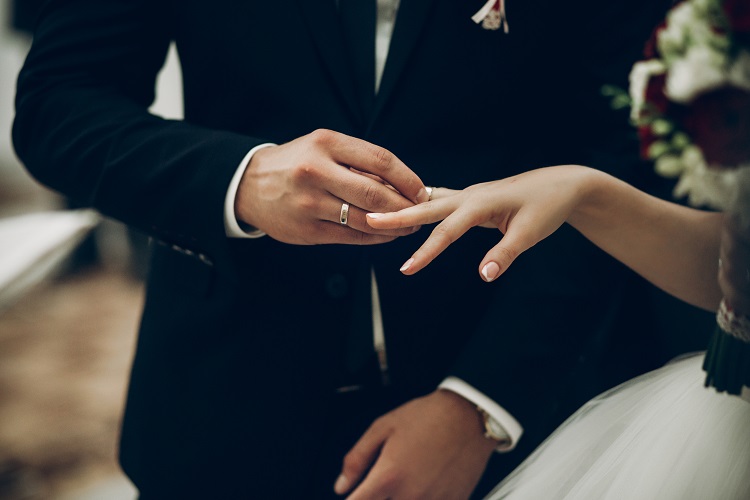Why do we wear wedding rings? And which hand are we supposed to wear them on and why?
The wedding ring traditions of different countries and cultures include many traditions which may be unfamiliar to you, but even in the western world, there are different ideas on these traditions. There is some disagreement about how these traditions began and what they were originally intended for, but one thing’s for sure – wedding rings everywhere are a way of showing the world the commitment that a couple have made to one another.
It is known that wedding rings have been associated with wedding ceremonies as far back as the Roman Empire and perhaps earlier still. Wedding rings may have originally been a symbol of the marriage contract rather than of love – the wedding ring often being the final gift in a series of gifts making up a dowry. However, it was not until 1215 AD that wedding rings became a part of Christian wedding traditions, when Pope Innocent III instituted them as a part of wedding ceremonies at the 4th Lateran Council.
The tradition of wearing wedding rings on the left hand comes from 16th century England, where King Edward VI decreed that they be worn on this hand as this was believed to be closet to the heart. The Greeks and Egyptians also wore wedding rings on the left hand on what we now call the ring finger because of their belief that a vein in this finger ran directly to the heart.
In other cultures, wedding rings are worn on the right hand rather than the left. This is the practice in orthodox Jewish communities as well as in Russia and some countries in Asia. In some parts of the world, jewellery other than rings may be worn instead of rings, though they still symbolise love and commitment as wedding rings do in the western world.
It used to be more common for only the wife to wear a wedding ring; in the US, the tradition of men wearing a wedding band didn’t really catch on until the mid 20th century. Before World War II, only around 15% of men in the US wore a wedding band but by the 1950s, this figure had risen to 80% and is now nearly universal.
The common practice now is for men to present an engagement ring when proposing and for wedding bands to be exchanged at the wedding itself. The engagement and wedding rings are often available in a set of three matching rings.
Wedding rings have gone from being a symbol of the marriage contract and corresponding financial agreements to being a symbol of the marriage itself, standing for undying love. These rings demonstrate to the rest of the world that a couple have made a deep commitment to each other and as such, couples put a lot of thought into choosing their rings. These are deeply personal pieces of jewellery which have a special significance to the couple who have pledged to make a life together.
If you’d like your handmade wedding rings to be tailor made to your requirements, or if you’d like to enquire about helping to design them yourself, contact Siobhan today.

